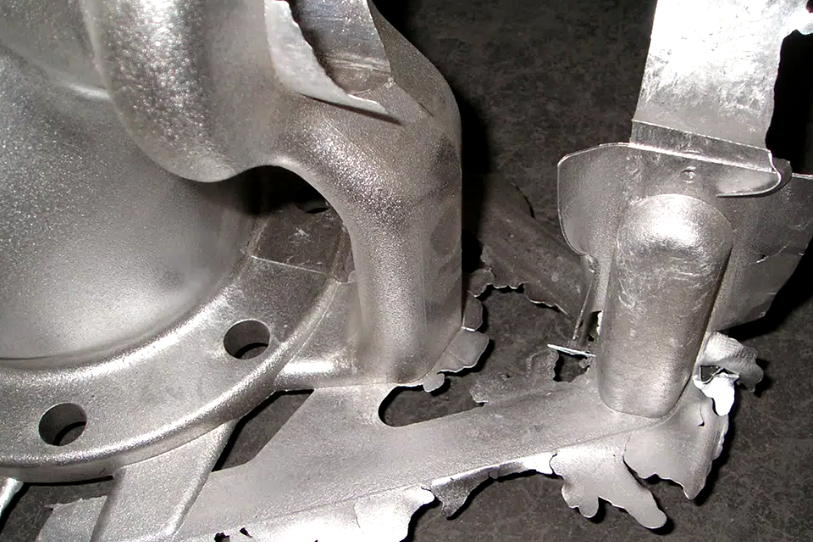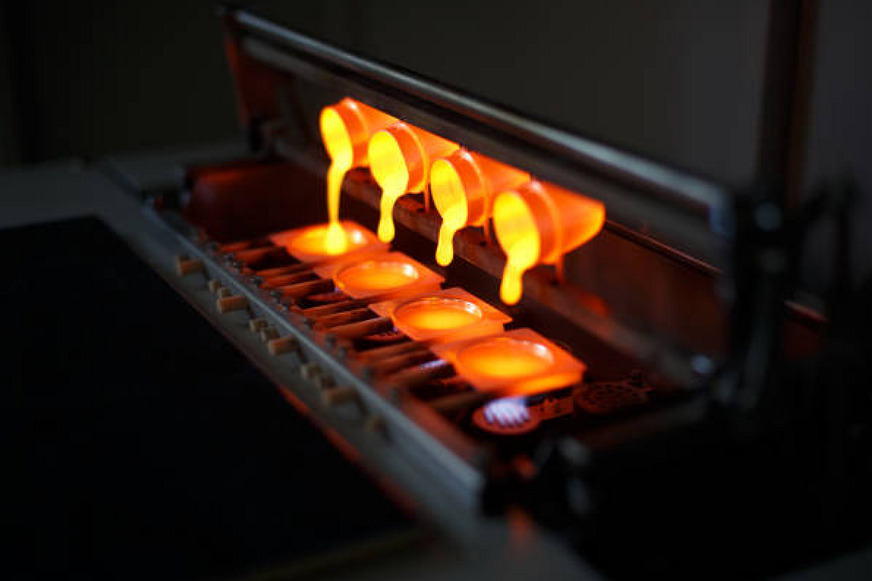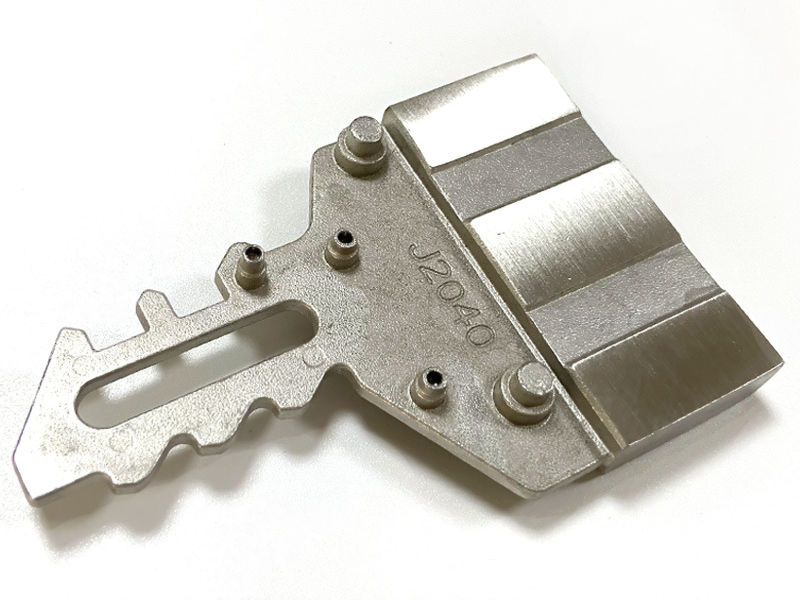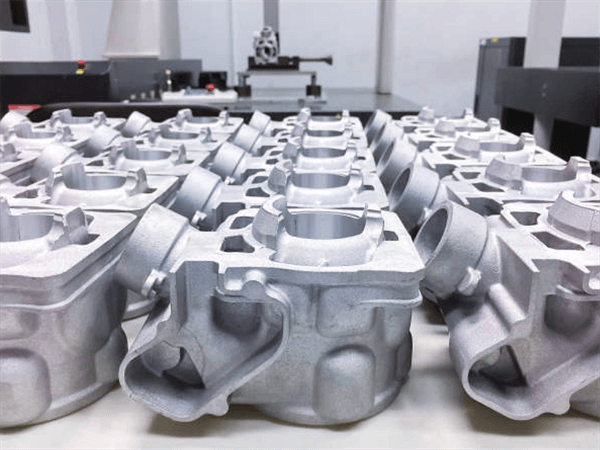Gravity vs. Sand Casting: A Comparison of Two Metal Casting Processes
Gravity Casting Process Overview
Gravity casting, also known as permanent mold casting, relies on the force of gravity to fill the mold cavity with molten metal. It uses reusable metal molds that produce consistently dimensioned castings with a good surface finish.
The mold is positioned below the pouring basin in gravity casting, allowing the metal to flow into the cavity unaided under gravity pressure alone. No external forces or gating systems are used. The mold remains stationary during pouring and cooling. Once solidified, the mold is opened and the casting removed. The permanent mold can then be reused repeatedly for production.

Gravity Casting service produces small to medium-sized metal castings from a few ounces up to 50 pounds. Typical cast metals include aluminum, magnesium, brass, bronze, stainless steel, and carbon steel. High-production die casting service offers advantages for very high volume small parts. The custom sand casting service may be more suitable for singular large parts.
Differences | Gravity Casting | Sand Casting | Die Casting |
Mold Material | Permanent metal mold | Disposable sand mold | Permanent metal die |
Mold Cost | Medium | Low | High |
Size Capabilities | Small to medium <50 lbs | Small to very large | Small < 25 lbs |
Dimensional Tolerance | High ±0.5% | Low ±1-2% | Very High ±0.2% |
Surface Finish | Excellent | Poor | Good |
Production Rate | Medium 30 sec - 5 min cycles | Slow 5-30 min cycles | Very High <1 min cycles |
Automation | Moderate | Low | High |
Labor Requirements | Moderate skill | High skill | Low skill |
Post Processing | Moderate machining | Extensive machining | Little machining |
Alloys Used | Non-ferrous | All alloys | Non-ferrous |
The permanent mold material must withstand the temperature of the molten metal being poured without damage. Cast iron, pre-hardened steel alloys, aluminum bronze, copper alloys, and graphite are common mold materials. The mold is CNC machined or cast from a master pattern for optimal dimensional precision.
Mold design includes draft angles for easy part ejection. The mold may include water cooling channels to accelerate solidification and enable faster cycles. Lifters and ejector pins are often incorporated for part removal. Minimal draft angles down to 0.5 degrees are possible via hot mold techniques, where the mold is preheated before pouring.
Advantages of Gravity Casting
Gravity casting provides higher dimensional accuracy, better surface finishes, and faster production cycles than sand casting. The main advantages include:
- Dimensional consistency - The permanent mold provides precise cavity dimensions that do not degrade overruns like sand molds. Tolerances down to ±0.5% of casting dimensions are possible.
- Surface finish - The metal mold allows castings with smoother surfaces that minimize post-finishing. Certain mold materials like iron also impart a glossy as-cast appearance.
- Reduced machining - More net shape castings require less stock material removal thanks to the permanent mold's precision.
- Faster production - Cycle times range from 30 seconds to 5 minutes, up to 4x faster than sand casting. The reusable mold eliminates assembly time.
- Less skilled labor - Gravity casting has more straightforward operational requirements without complex gating and core assemblies.
- Low tooling cost - The permanent mold represents a lower upfront tooling investment than sand core boxes and patterns. It also enables long production runs.
- Low-medium volume production: Compared with the die-casting process suitable for mass production and foundry casting suitable for small batch production, gravity casting is an intermediate choice, suitable for small and medium batch production comparable to die casting, generally in the range of 2000 to 8000pcs
Limitations of Gravity Casting
- Size limitations - Large or bulky parts are impractical, with typical limits around 50 pounds and 15 inches in size range.
- Weight restrictions - Excessively heavy castings apply high forces on mold cavity surfaces during solidification, leading to wear and dimensional inaccuracies over time.
- Alloy restrictions - Reactive, low melting point alloys can damage permanent molds upon repeated contact and pouring.
- Design restrictions - Complex internal cavities, deep recesses, and undercuts are onerous due to the lack of collapsible sand core capability.
- Lower mechanical properties - Rapid cooling in the metal mold leads to somewhat coarser microstructures and lower ductility/impact strength.
Gravity Casting vs. Sand Casting
Comparing gravity casting to conventional sand casting processes highlights critical differences:
- Tooling - Gravity casting uses reusable metal tooling, while sand casting uses disposable sand molds and patterns.
- Dimensional accuracy - Gravity castings offer tolerances of ±0.5% vs. ±1-2% for sand castings.
- Surface finish - Gravity mold materials like iron and steel provide glossy surfaces. Sand molds have rough finishes.
- Casting size - Gravity casting handles smaller parts of under 50 lbs vs. sand's unlimited size capability.
- Production volume - Gravity casting suits lower volumes of 10-10,000 parts. Higher volumes use other methods. Sand Casting suits for 10-5000 parts.
- Production rate - Gravity casting enables much faster cycles with 30 sec to 5 min durations thanks to reusable molds. Sand casting takes 10 mins or more.
- Labor skills - Less gating/rising expertise is needed for gravity casting and its more straightforward mold design.
- Equipment - Gravity casting requires a simple pouring station, while sand casting needs mold-forming equipment.
- Defects - Gravity castings see less gas porosity but more cold shuts. Sand casting is prone to inclusion defects.
- Post-processing - More net shape gravity castings require less finishing machining than sand cast parts.
For short-run complex metal components under 50 lbs, gravity casting delivers higher quality than sand casting while avoiding the high tooling costs of die casting. It offers the advantages of a permanent mold process at lower production volumes.
Neway Low-Medium Volume Gravity Casting Service
“Thanks to Neway’s expertise in lower volume gravity casting, we rapidly prototyped our breakthrough product design and cost-effectively brought it to market. Their skilled craftsmen delivered flawless castings exceeding our specifications. And their design for manufacturing experience was invaluable. I’m not sure where we’d be without their gravity casting partnership in creating this innovative product.” – Alfred Melson-Volkswagen



